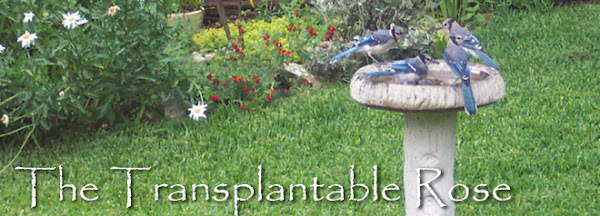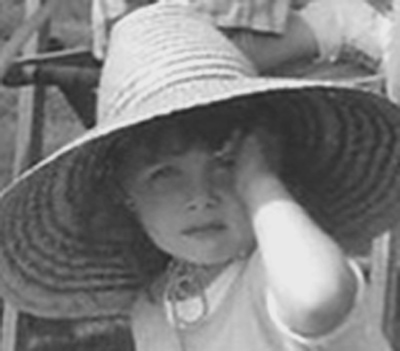
The two authors, Steven Bender and Felder Rushing talk about individual plants in a neighborly, anecdotal way, sometimes lurching over the line into Jeff Foxworthy territory, but with genuine horticultural information under the kudzu. I have no resistance to this kind of Southern- style writing, treasuring old paperbacks by Lewis Grizzard and Celestine Sibley, enjoying the YaYa Sisterhood, and loving movies like Steel Magnolias and Fried Green Tomatoes. If you can’t swallow garden writing served with a side of cheese grits, you may need a lot of iced tea to get you through the pages, but the plant stories are wonderful. I love my copy, sometimes rereading the book for fun, and sometimes using it as a reference for specific plants.
Many of the most tempting stories are about plants that won’t grow above zone 7, giving the Northern gardener a case of zone envy. Felder and Steve are currently considering a new book about Passalong Plants for colder zones, so if you live where camelias freeze, read this book first and hope they’ll write a companion volume in the future.
 Last March, I posted about meeting Felder Rushing, and mentioned that my copy of the book was written-in, and stuffed with notes. The extra pages at the back of the book were blank when I bought the book, but were soon covered in lists of plants and people. I noted daylilies named ‘Timeless’ and ‘Charm Bracelet’ as coming from Bernice, that Sweet Autumn Clematis was given to me by Ruth, whose plant came from Sophie. The Malva moschata was from Dorothy, Iris from Lorraine, Peonies from Patty, Sweet woodruff from Sherry, orange lilies from Laverne and that the Jack in the Pulpit was passed along to me by my mother. Most of the passalong plants in our Illinois garden stayed there when we moved to Texas in 1999.
Last March, I posted about meeting Felder Rushing, and mentioned that my copy of the book was written-in, and stuffed with notes. The extra pages at the back of the book were blank when I bought the book, but were soon covered in lists of plants and people. I noted daylilies named ‘Timeless’ and ‘Charm Bracelet’ as coming from Bernice, that Sweet Autumn Clematis was given to me by Ruth, whose plant came from Sophie. The Malva moschata was from Dorothy, Iris from Lorraine, Peonies from Patty, Sweet woodruff from Sherry, orange lilies from Laverne and that the Jack in the Pulpit was passed along to me by my mother. Most of the passalong plants in our Illinois garden stayed there when we moved to Texas in 1999.But among the passalong plants in my present garden are two that traveled long and winding roads to live in Austin, Texas.
 Look into the photo above and you’ll see some tall while phlox, cavorting with a white Echinacea and some Perovskia last July. The family legend says that my great-grandmother grew the phlox in Michigan in the early 1900’s. By 1924 she'd given a division to her daughter, my Grandma Anna, who took them to Chicago. Grandma passed them along to my parents in the 1950’s. Decades later, I took some of the white phlox with me to a rental townhouse, then to our first house. Another four years passed, I redivided the burgeoning clump and took some to our second house, then repeated the process and planted them in the square garden at the third house, seen below.
Look into the photo above and you’ll see some tall while phlox, cavorting with a white Echinacea and some Perovskia last July. The family legend says that my great-grandmother grew the phlox in Michigan in the early 1900’s. By 1924 she'd given a division to her daughter, my Grandma Anna, who took them to Chicago. Grandma passed them along to my parents in the 1950’s. Decades later, I took some of the white phlox with me to a rental townhouse, then to our first house. Another four years passed, I redivided the burgeoning clump and took some to our second house, then repeated the process and planted them in the square garden at the third house, seen below.
 The journey of another plant began on April 13, 1992, when a garden club speaker in Illinois gave me wands of corkscrew willow - extra greenery from an arrangement. I managed to root one of the slender twisted branches and grew it in a whiskey barrel. The wand eventually expanded into an attractive tree, from which I rooted more cuttings, one for my son M. and a couple for my friend Barbara.
The journey of another plant began on April 13, 1992, when a garden club speaker in Illinois gave me wands of corkscrew willow - extra greenery from an arrangement. I managed to root one of the slender twisted branches and grew it in a whiskey barrel. The wand eventually expanded into an attractive tree, from which I rooted more cuttings, one for my son M. and a couple for my friend Barbara. 


































 Last winter’s cold and ice killed the Salvia guaranitica, the Pineapple Sage/Salvia elegans and the hybrid Salvia ‘Black & Blue’ to ground level here in NW Austin. All three Salvias were hummingbird favorites last summer, but the Pineapple sage is still struggling up from the ground, the Black & Blue has only buds, and the Salvia guaranitica in the photo above just started to open in the last few days.
Last winter’s cold and ice killed the Salvia guaranitica, the Pineapple Sage/Salvia elegans and the hybrid Salvia ‘Black & Blue’ to ground level here in NW Austin. All three Salvias were hummingbird favorites last summer, but the Pineapple sage is still struggling up from the ground, the Black & Blue has only buds, and the Salvia guaranitica in the photo above just started to open in the last few days.  The first Larkspur flowers showed color on Monday, weeks after they were blooming in South Austin gardens. Larkspur/Consolida ambigua self-seed each winter, and usually grow quickly in April. This cooler, wetter spring seemed to delay their growth at first, then allowed them to grow way too tall and top-heavy. Recent thunderstorms toppled some, and the heavy wet soil is making some plants rot at the base. Whenever we expand our planting areas I move a few seedlings to the new beds, leaving it up to the Larkspur if they want to grow there.
The first Larkspur flowers showed color on Monday, weeks after they were blooming in South Austin gardens. Larkspur/Consolida ambigua self-seed each winter, and usually grow quickly in April. This cooler, wetter spring seemed to delay their growth at first, then allowed them to grow way too tall and top-heavy. Recent thunderstorms toppled some, and the heavy wet soil is making some plants rot at the base. Whenever we expand our planting areas I move a few seedlings to the new beds, leaving it up to the Larkspur if they want to grow there.  The first flowers opened on the double yellow, fragrant Oleander from
The first flowers opened on the double yellow, fragrant Oleander from  This week brought the first flowers on the Achillea 'Moonshine', also called yarrow. Both yarrow and lambs ear look good now, but they're frequently a ratty mess by late summer. I just cut them back severely and hope for new fresh foliage. Those buds to the right of the yarrow belong to a lemony yellow reblooming daylily, ‘Happy Returns’.
This week brought the first flowers on the Achillea 'Moonshine', also called yarrow. Both yarrow and lambs ear look good now, but they're frequently a ratty mess by late summer. I just cut them back severely and hope for new fresh foliage. Those buds to the right of the yarrow belong to a lemony yellow reblooming daylily, ‘Happy Returns’. 


